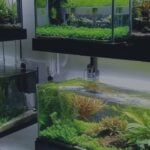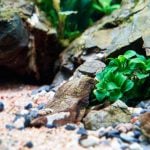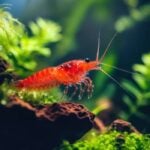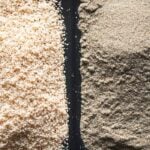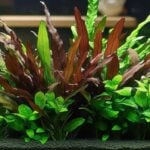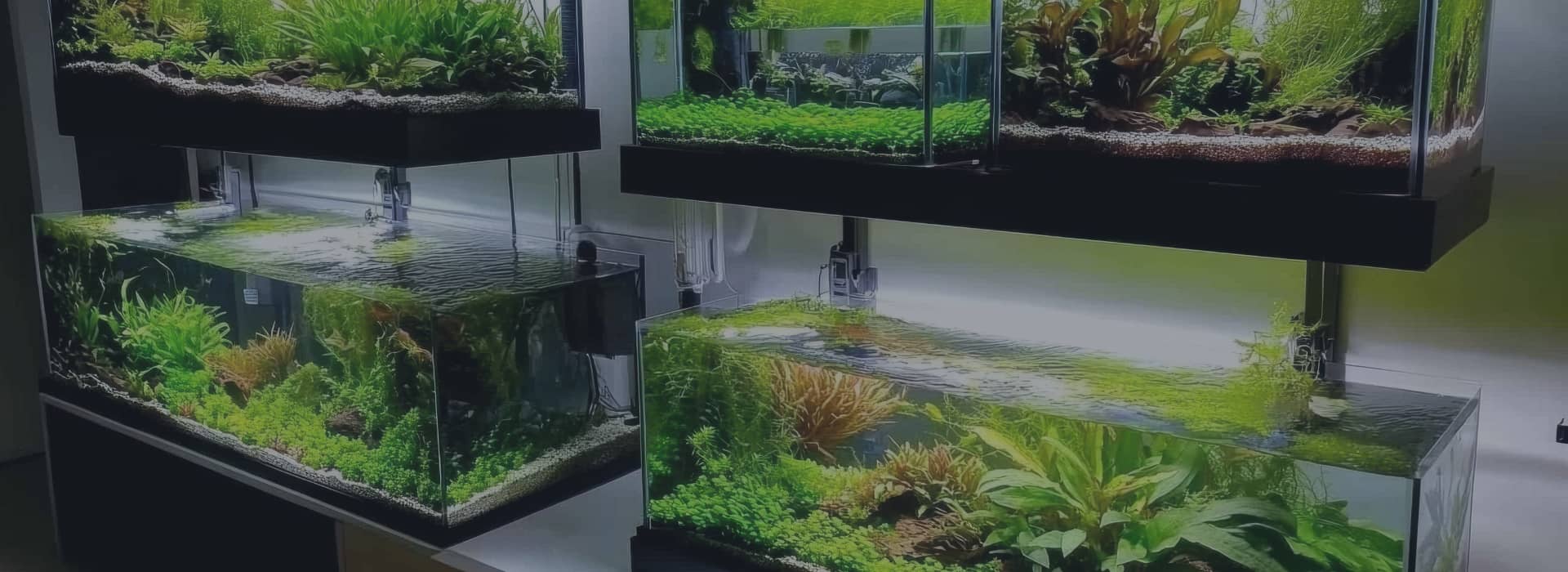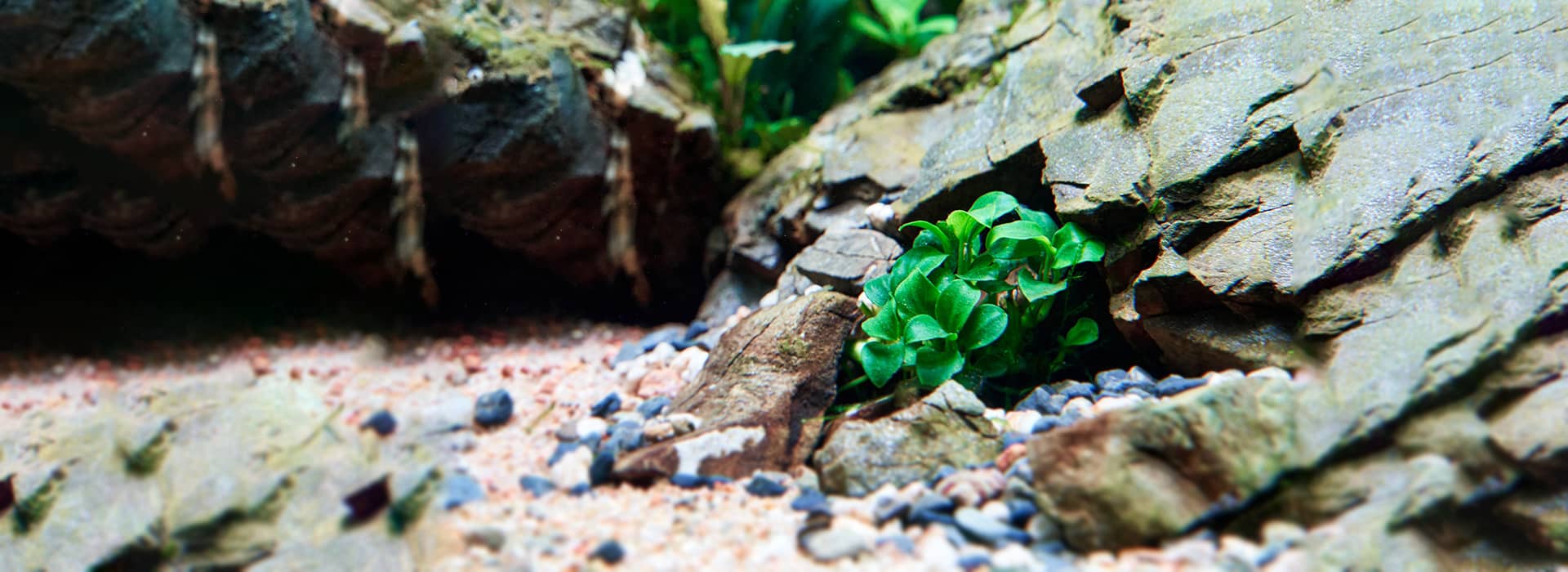Java Moss and Aquascaping go hand in hand and there are many reasons why it such a popular choice among hobbyists. Aquascaping with Java Moss is a popular and rewarding way to create a stunning and natural-looking aquatic environment in your aquarium. Java Moss is a versatile and easy-to-grow plant that can be used in a variety of aquascaping styles, from lush carpets to elegant driftwood arrangements. This hardy and adaptable plant can thrive in a range of water conditions and is suitable for both beginner and experienced aquascapers.
Java Moss and its Benefits in Aquascaping
Java Moss (Taxiphyllum barbieri) is a very popular aquatic plant that is widely used in aquascaping for its numerous benefits. One of the key benefits of Java Moss is its versatility in aquascaping, as it can be used in a variety of styles and settings, from naturalistic riverbeds to intricate rock gardens.
Here are some of the key benefits of using Java Moss in aquascaping:
- Easy to grow: Java Moss is a hardy and low-maintenance plant that can thrive in a variety of water conditions. It is an excellent choice for beginners, as it requires minimal care and attention.
- Versatile: Java Moss can be attached to almost any surface, including rocks, wood, and even aquarium walls. This makes it a great choice for creating natural-looking and intricate aquascapes.
- Natural filtration: Java Moss can help to filter and purify the water in your aquarium, by absorbing nutrients and other impurities.
- Provides shelter and food: Java Moss can provide a safe and comfortable habitat for fish and other aquatic creatures, as well as serve as a source of food and nutrients for them.
- Aesthetically pleasing: Java Moss has a soft and feathery texture that can add a natural and elegant look to your aquarium. It can be used to create lush carpets, cover rocks and driftwood, or create intricate patterns and designs.
Overall, Java Moss is a versatile and beneficial plant that can add both aesthetic and functional value to your aquascape. With proper care and attention, it can thrive and enhance the health and beauty of your aquatic environment.
Java Moss – A Brief Description
Java Moss or Taxiphyllum barbieri) is a popular aquatic plant in the hobby due to its unique texture and ease of care. In the wild it can be found thriving in both aquatic and semi-aquatic conditions. Here is a physical description of Java Moss:
- Appearance: Java Moss is a low-growing, creeping plant that forms a tangled mass of tiny stems and leaves. The leaves are small, about 1-3 mm long, and thin, with a feathery or fern-like appearance. The plant grows in a branching pattern, with new shoots sprouting from existing stems.
- Colour: Java Moss is usually dark green, but the colour can vary depending on lighting and water conditions. In bright light, the plant may develop a lighter green or yellowish tint.
- Texture: Java Moss has a soft and fluffy texture, similar to a carpet or a sponge. The tiny leaves and stems create a dense and spongy mat that can provide shelter and hiding places for small fish and invertebrates.
- Size: Java Moss can grow up to 10 cm in length, but it usually stays low and compact when grown in an aquarium.
- Growth rate: Java Moss is a slow-growing plant that can take several months to establish and spread in an aquarium. Once established, it can grow up to 1 cm per month.
Planning Your Java Moss Aquascape: Key Factors to Consider
Before diving into the actual aquascaping process with Java Moss, it is important to plan out your design carefully. Here are some key factors to consider when planning your Java Moss aquascape:
- Tank size: The size of your aquarium will determine the amount of Java Moss you will need, as well as the overall design of your aquascape. Make sure to choose a tank that is large enough to accommodate your desired layout.
- Lighting: Java Moss requires adequate lighting to grow and thrive. Make sure to choose the right type and intensity of lighting for your aquarium, and position it properly to ensure that your Java Moss gets enough light.
- Water flow: Java Moss requires a moderate to strong water flow to stay healthy and prevent the buildup of debris and algae. Consider the placement of your filter and other equipment to ensure that there is adequate water flow throughout your aquarium. However, the flow shouldn’t be too or else it will hamper the growth of the plant.
- Substrate: The type of substrate you choose can affect the growth and health of your Java Moss. Consider using a nutrient-rich substrate or adding fertilisers to promote healthy growth.
- Hardscape: The hardscape, including rocks, wood, and other decorations, will play a key role in the overall design of your Java Moss aquascape. Consider the size, shape, and placement of your hardscape elements to create a natural and balanced look.
- Fish and other inhabitants: Consider the needs and preferences of your fish and other aquatic inhabitants when planning your Java Moss aquascape. Provide ample hiding places and swimming areas, and choose compatible species that are plant-friendly.a
By carefully considering these factors, you can create a stunning and healthy Java Moss aquascape.
Choosing the Right Aquarium and Equipment for Java Moss
When choosing an aquarium and equipment for your Java Moss aquascape, there are several factors to consider:
- Tank size: Java Moss can be grown in tanks of various sizes, but larger tanks tend to provide a more stable environment for the plants and fish. Consider the space available in your home and the number of fish you want to keep.
- Lighting: Java Moss requires moderate to high lighting levels to grow properly. Choose a lighting system that can provide enough intensity and duration of light for your Java Moss to thrive. Since Java Moss grows low, the light should reach wherever this plant is growing.
- Filter: A good filter is essential for maintaining water quality and keeping your Java Moss healthy. Choose a filter that provides enough water flow to keep debris and waste from settling in your aquarium, but not too strong to damage your Java Moss.
- Heater: Java Moss can grow in a range of temperatures, but the ideal temperature range is 22-28°C or 72-82°F. Choose a heater that can maintain a consistent temperature within this range.
- Substrate: Java Moss can be attached to any substrate, but some substrates provide better growth conditions than others. Consider using a nutrient-rich substrate like Fluorite or Eco-Complete to provide your Java Moss with essential nutrients.
- CO2 system: While not necessary, a CO2 system can help your Java Moss grow faster and healthier. Consider adding a CO2 system to your aquarium if you want to promote optimal growth.
Preparing Your Aquarium for Java Moss Aquascaping
Before you start aquascaping your aquarium with Java Moss, it’s essential to prepare your aquarium for the plant’s growth and success. Here are some steps to follow to prepare your aquarium for Java Moss aquascaping:
- Clean your aquarium: Start by cleaning your aquarium thoroughly. Remove any debris, algae, or unwanted plants, and clean the substrate and decorations using an aquarium-safe brush or scraper. Rinse everything with clean water and dry them before proceeding.
- Choose the right substrate: Java Moss does not have roots, so it does not require a nutrient-rich substrate like other plants. However, a fine-grained substrate, like sand or gravel, can help anchor the plant in place and create a natural look.
- Install appropriate lighting: Java Moss can grow under a wide range of lighting conditions, but it prefers moderate to high light levels. Choose appropriate lighting for your aquarium based on the size, depth, and plant’s light requirements.
- Provide proper water conditions: Java Moss prefers slightly acidic to neutral water with a pH range of 6.0-7.5. The water temperature should be in the range of 22-28°C or 72-82°F. Make sure to use a high-quality aquarium water conditioner to remove chlorine, chloramine, and other harmful chemicals from tap water.
- Cycle the tank: Before adding Java Moss, make sure that the tank is properly cycled and has a healthy and balanced ecosystem.
- Attach Java Moss to hardscape: Once your aquarium is ready, you can start attaching Java Moss to your hardscape elements like rocks, driftwood, or other decorations. Use cotton thread or fishing line to attach the moss to the objects and tie it securely.
Proper preparation and maintenance can help ensure the success of your Java Moss aquascape and provide a beautiful and natural-looking aquarium.
Techniques for Planting Java Moss in Your Aquarium
Java Moss is a versatile and easy-to-grow aquatic plant that can be used in many aquascaping designs. Here are some techniques for planting Java Moss in your aquarium:
- Tie the Moss to Hardscape: The most common method of planting Java Moss is to tie it to a piece of hardscape, such as a rock or driftwood. Use cotton thread or fishing line to tie small portions of the Moss to the hardscape. Over time, the Moss will grow and spread, creating a natural-looking carpet.
- Create a Moss Wall: If you want to create a Moss wall in your aquarium, use a fine plastic mesh and tie small portions of the Moss to it. Place the Moss wall at the back of the aquarium, and over time, the Moss will grow and cover the mesh.
- Float the Moss: Java Moss can also be floated on the surface of the water. This method is great for breeding tanks, as it provides cover for fry and encourages the growth of infusoria, a microscopic organism that is a great source of food for newly hatched fry.
- Glue the Moss to Decorations: Another method for planting Java Moss is to use aquarium-safe glue to attach it to decorations, such as rocks or wood. This method provides a secure attachment and creates a natural-looking scene.
When planting Java Moss, it’s important to remember that it is a slow-growing plant. Be patient and avoid overhandling the Moss, as this can damage the delicate strands. With the right techniques and care, Java Moss can be a beautiful and low-maintenance addition to any aquarium.
Designing an Aquascape with Java Moss: Tips and Ideas
Java Moss is a versatile and easy-to-care-for aquatic plant that can be used to create beautiful aquascapes in your aquarium. Here are some tips and ideas for designing an aquascape with Java Moss:
- Create a Moss Carpet: Use the tying technique to create a Java Moss carpet in the foreground of your aquarium. This can be a great way to create a natural-looking and low-maintenance landscape. You can also use a combination of Java Moss and other carpeting plants to create a more diverse carpet.
- Add Java Moss to Hardscape: Java Moss can be tied to hardscape, such as rocks or driftwood, to create a natural-looking scene. Use the Moss to create a waterfall effect or to add a touch of greenery to a rock garden.
- Combine with Other Plants: Java Moss can be combined with other aquatic plants, such as Anubias or Cryptocoryne, to create a more diverse and interesting landscape. Use the Moss to fill in gaps between larger plants or to create a textured foreground.
- Create a Moss Wall: Using a mesh material, create a Java Moss wall in the background of your aquarium. This can be a great way to add depth to your aquascape.
- Add Moss to Driftwood: Java Moss can be tied to driftwood to create a natural-looking miniature tree or shrub. This can be a great way to add height to your aquascape and create a focal point.
- Combine with Rocks: Java Moss can be combined with rocks to create a mountainous landscape or to add a touch of greenery to a rock garden.
With the right combination of plants and hardscape, you can create a beautiful and natural-looking landscape that your fish will love.
Maintaining Your Java Moss Aquascape: Water, Light, and Nutrient Requirements
Java Moss is known for its hardiness and low maintenance requirements. However, like all plants, it still requires certain conditions to thrive in an aquascape. Here are the water, light, and nutrient requirements for maintaining a healthy Java Moss aquascape:
- Water Requirements:
Java Moss is adaptable to various water parameters, but it prefers a slightly acidic to neutral pH (6.0 to 7.5) and soft to moderately hard water (2 to 10 dGH). It can tolerate a wide range of temperatures between 22-28°C or 72-82°F. Make sure to maintain good water quality by doing regular water changes, maintaining adequate filtration, and avoiding overfeeding. - Light Requirements:
Java Moss is a low light plant that can survive in dimly lit environments, but it will grow better with moderate to high light. A lighting system with a colour temperature of 6500K to 7500K and a PAR (photosynthetically active radiation) of 30 to 50 micromoles is sufficient for healthy growth. Avoid direct sunlight, as it can cause excessive algae growth and harm the plant. - Nutrient Requirements:
Java Moss is a slow-growing plant that does not have high nutrient requirements. However, it still requires some essential nutrients to maintain healthy growth. Supplement the aquarium with a comprehensive liquid fertiliser that contains iron, potassium, and other micronutrients. Additionally, CO2 injection can improve the plant’s growth rate and overall health.
Java Moss is a versatile plant that can grow attached to rocks, driftwood, and other surfaces. When planted in the substrate, it may develop brown or black spots due to insufficient light or poor water circulation. To prevent this, tie the Java Moss to a surface with a fishing line or cotton thread until it has established itself.
Common Problems with Java Moss Aquascaping and How to Avoid Them
While Java Moss is a hardy and low-maintenance plant, there are still some common problems that aquascapers may encounter. Here are some common problems and how to avoid them:
- Algae Overgrowth:
Java Moss is susceptible to algae overgrowth, especially when exposed to excessive light. To avoid this problem, maintain moderate lighting conditions and avoid direct sunlight. You can also reduce the duration of light exposure by using a timer. Additionally, ensure that your aquarium water parameters are stable and avoid overfeeding, which can cause excessive nutrient levels that contribute to algae growth. - Poor Growth:
If your Java Moss is not growing well, it may be due to inadequate light, insufficient nutrients, or poor water quality. Ensure that you are providing adequate lighting and supplementing your aquarium with essential nutrients. Additionally, ensure that your aquarium water parameters are within the acceptable range for Java Moss. You can test your aquarium water regularly to check for any imbalances in pH, hardness, or nutrient levels. - Falling Apart:
Java Moss can sometimes detach from the surface it’s attached to and fall apart. This is often caused by poor attachment to a stable surface. To avoid this problem, make sure that the Java Moss is properly anchored in place using a cotton thread, fishing line, or aquarium-safe glue until the Java Moss is properly established. - Brown or Black Spots:
If your Java Moss is developing brown or black spots, it may be due to inadequate lighting or poor water circulation. Ensure that your aquarium lighting is sufficient for Java Moss and that the water circulation is good. Additionally, make sure that the Java Moss is not overcrowded or being shaded by other plants in your aquarium.
FAQ
What is Java Moss?
Java Moss (Taxiphyllum barbieri) is a popular aquatic plant in the aquarium hobby. It’s known for its hardiness, adaptability, and low maintenance requirements.
Can Java Moss grow without CO2 injection?
Yes, Java Moss can grow without CO2 injection. However, CO2 injection can improve the plant’s growth rate and overall health.
How do you attach Java Moss to a surface?
You can attach Java Moss to a surface using cotton thread or fishing line. Tie the moss to the surface and wait for it to establish itself before removing the thread or line.
How much light does Java Moss need?
Java Moss is a low light plant that can survive in dimly lit environments, but it will grow better with moderate to high light. A lighting system with a colour temperature of 6500K to 7500K and a PAR of 30 to 50 micromoles is sufficient for healthy growth.
Can Java Moss be grown in a cold water aquarium?
Yes, Java Moss can be grown in a cold water aquarium as long as the temperature does not drop below 16°C.
How often should I fertilise my Java Moss?
Java Moss is a slow-growing plant that does not have high nutrient requirements. However, it still requires some essential nutrients to maintain healthy growth. Supplement the aquarium with a comprehensive liquid fertiliser that contains iron, potassium, and other micronutrients once or twice a week.
Can I plant Java Moss in the substrate?
Yes, Java Moss can be planted in the substrate, but it may develop brown or black spots due to insufficient light or poor water circulation. To prevent this, tie the Java Moss to a surface with a fishing line or cotton thread until it has established itself.
Can Java Moss be used as a foreground plant?
Yes, Java Moss can be used as a foreground plant. It can also be used as a midground or background plant depending on how it’s arranged and the size of the aquarium.
How long does it take for Java Moss to grow?
Java Moss is a slow-growing plant that can take several weeks or even months to establish itself in an aquarium. However, with proper care and conditions, it can grow into a lush and vibrant aquascape.
Can Java Moss be grown emersed?
Yes, Java Moss can be grown emersed, which means growing it outside of water with its roots submerged in water. However, it may require higher humidity levels and more frequent watering than when grown submerged in water.
Conclusion
Aquascaping an aquarium with Java Moss is a great way to create a lush and natural-looking aquascape. This hardy and low-maintenance plant is ideal for beginners or those who want to add some greenery to their aquarium without too much effort. To create a beautiful Java Moss aquascape, start by selecting a suitable aquarium and substrate, providing adequate lighting, and supplementing the aquarium with essential nutrients. You can then arrange the Java Moss in different ways to create different effects, such as a carpet, wall, or tree. With proper care and maintenance, your Java Moss aquascape can grow into a stunning and thriving aquatic ecosystem that you’ll be proud to show off.
